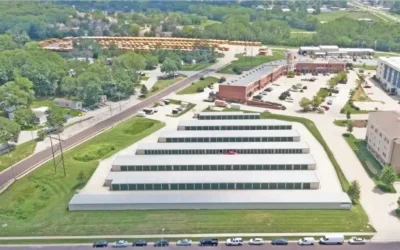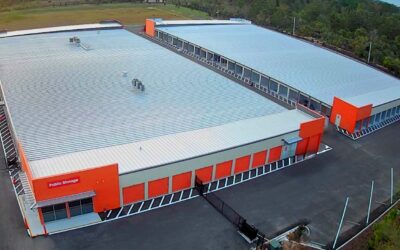The record high levels of new supply delivered to the self-storage market last year don’t appear to be diminishing buyer appetite.
According to Real Capital Analytics, transaction volume jumped to $6.16 billion last year. Even excluding a $1.3 billion entity level transaction, sales were up about 15 percent year-over-year. Development and how that supply is likely to impact performance is the number one topic among investors as they contemplate decisions to buy or sell assets in the coming year.
According to Marcus & Millichap, completions hit a high of 68 million square feet in 2018 and are expected to slow to 48 million square feet this year. Yet storage occupancy is holding up amid that new supply. In its 2019 Self Storage Investment Outlook, Marcus & Millichap is forecasting that vacancies will rise only 30 basis points this year to 10.3 percent.
“When you consider how much construction is out there, this is pretty outstanding performance,” said John Chang, senior vice president, national director, research services at Marcus & Millichap.
Drivers for demand
There are still good drivers for demand in terms of economic growth, population growth and household formations. That being said, some markets such as Dallas, Denver and Washington, D.C. have seen bigger increases in supply as a percentage of inventory. On the flip side, there are markets that have strong demand drivers that have not seen an influx in new supply, such as the Inland Empire, Las Vegas and Sacramento, adds Chang.
Many investors are looking at cap rates, interest rates and the strength of the economy and wondering if it is a better time to buy or sell.
“It really boils down to a performance based decision rather than an interest rate or cap rate decision,” said David Shillington, president, Marcus & Millichap Capital Corp.
Liquidity supports sustained activity
Many anticipate another strong year of investment sales activity ahead. New construction provides new buying opportunities, even if buyers tend to think the supply of good quality stabilized and cash-flowing properties is more constrained.
Another factor that bodes well for continued robust transaction volume in the coming year is good liquidity.
“The banks continue to be very hungry for stabilized, cash-flowing assets,” said Shillington.
About 70 percent of the deals financed over the last 12 months have been done with local, regional or community banks, he says. And cost of capital remains cheap. Although the 10-year treasury rose above 3 percent last fall, it has since dropped by about 50 basis points to hover at about 2.7 percent in mid-February.
“The availability of capital is still there, but I do see some of the lenders on new development deals and value-add deals taking a little bit more of a jaundiced eye on proformas,” said Shillington.
Lenders are also factoring in the potential for rising rates on an exit strategy, but there continues to be a lot of capital in the market available for self-storage, he adds.
Buyers are wary of risk
Self-storage is attracting investors who are looking for late-cycle investment opportunities with a lower risk profile. A recent report on self-storage REITs by Moody’s Investors Services noted that the industry is likely to benefit from “recession-resistant” characteristics, which include steady consumer demand for rentals in up and down markets and low capital expenditures.
That being said, there is some caution creeping into the market and buyers are becoming more selective on bidding. For example, buyers have a strong appetite for stabilized assets with good operating history and are aggressively bidding on those deals. On the opposite end of the spectrum, there is some softening in bidding for those assets that require more assumption of risk, such as certificate of occupancy deals, says Ryan Clark, director of investment sales at Tampa-based Skyview Advisors.
According to Real Capital Analytics, average cap rates moved 30 basis points higher last year to average 6.5 percent at year-end.
“We haven’t seen any significant upward movement in cap rates, although the top end of the buyer pool has thinned out and it is not as robust as it was two or three years ago,” said Clark.







